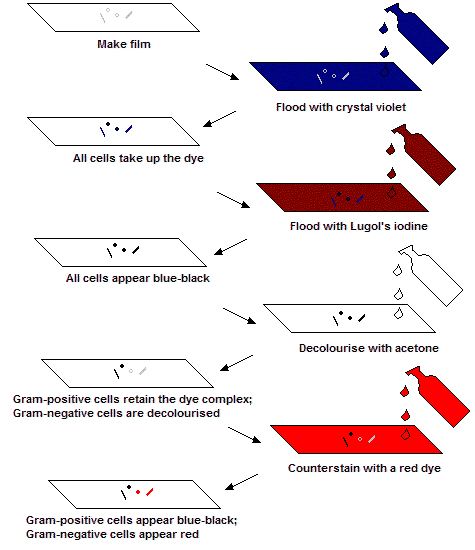This property reveals fundamental differences in the cell envelope between the two groups. Gram-positive bacteria have many layers of peptidoglycan in their cell wall; Gram-negative bacteria have only one or two peptidoglycan layers but, additionally, they have an outer membrane. These differences have important consequences. For example, certain antibiotics cannot penetrate the outer membrane of Gram-negative bacteria, which are intrinsically resistant to these drugs as a consequence.
Below is a schematic, showing how the Gram stain works:
 |